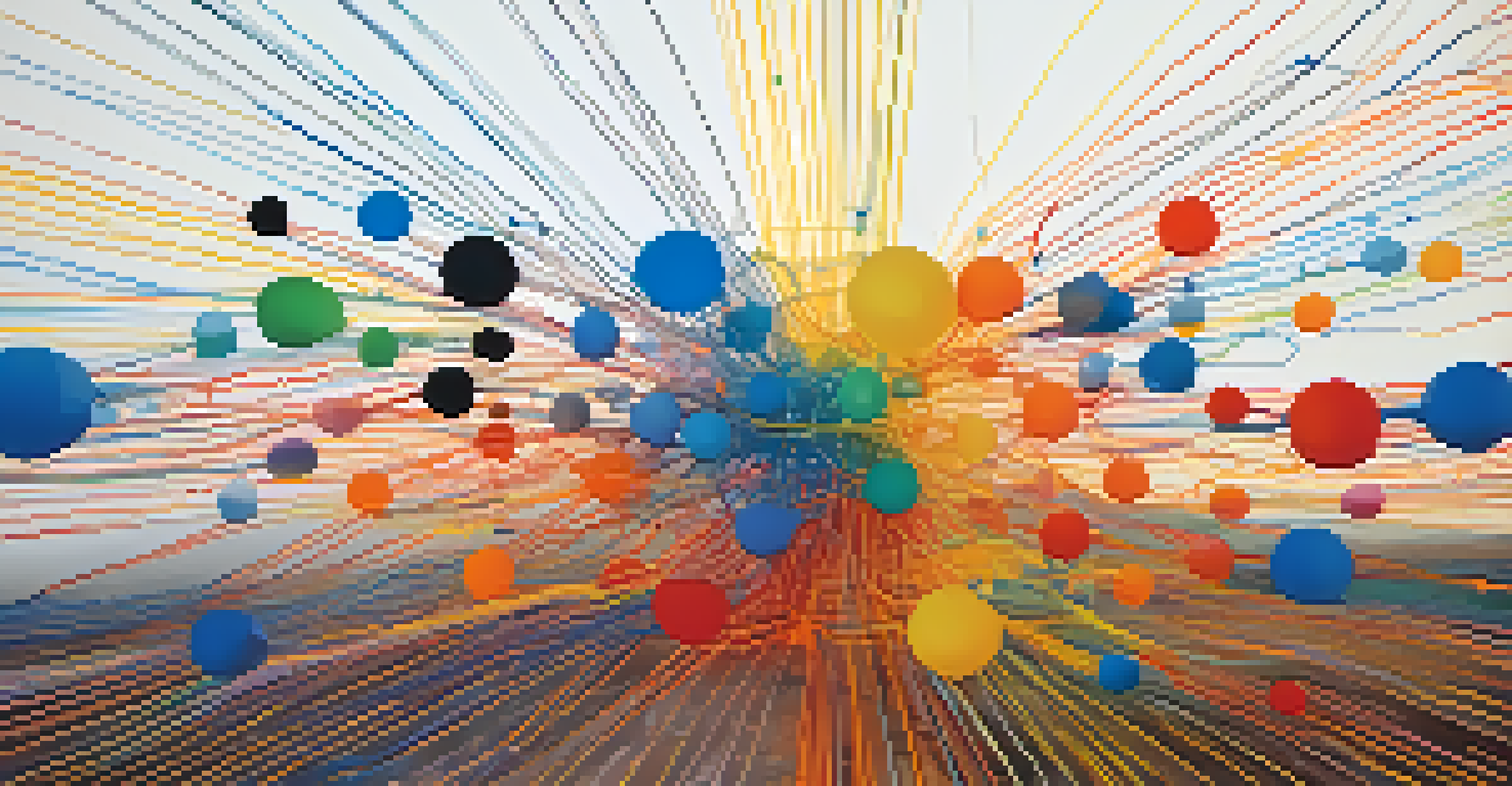DAOs vs Traditional Governance: A Comparative Analysis

Understanding DAOs: The Basics of Decentralized Governance
Decentralized Autonomous Organizations, or DAOs, are a new breed of governance structure that operates on blockchain technology. Unlike traditional organizations, which often have a hierarchical structure, DAOs allow for decentralized decision-making. This means that every member has a voice and can participate in governance, fostering a sense of community involvement.
The great thing about DAO is that it allows for collective governance and decision-making without relying on a centralized authority.
A key feature of DAOs is their transparency. Every decision made within a DAO is recorded on the blockchain, creating an immutable ledger that anyone can review. This level of transparency contrasts sharply with traditional governance, where decision-making processes can be opaque and difficult to scrutinize.
Moreover, DAOs often use smart contracts to automate processes, reducing the need for intermediaries. This can lead to more efficient operations and quicker decision-making, a stark departure from the slower, bureaucratic processes typical of traditional organizations.
Traditional Governance: Structure and Function
Traditional governance structures are typically hierarchical, with clear lines of authority. This means that decisions often flow from the top down, which can lead to a disconnect between leadership and the average member. This model has been the standard for centuries, providing stability and order but often at the cost of individual input.

In traditional settings, governance can be marked by bureaucracy, where processes can become convoluted and slow. This can frustrate members who feel their voices are not being heard. Moreover, the lack of transparency can lead to mistrust, as stakeholders may not have clear insight into decision-making processes.
DAOs Enable Decentralized Governance
Decentralized Autonomous Organizations (DAOs) foster inclusive decision-making by allowing all members to participate in governance, contrasting sharply with traditional hierarchical models.
Despite its limitations, traditional governance has proven effective in certain contexts, particularly in large organizations where structured leadership is necessary. The familiarity of this model is comforting for many, but it also raises questions about innovation and adaptability in a rapidly changing world.
Key Differences Between DAOs and Traditional Governance
One of the most significant differences between DAOs and traditional governance is the method of decision-making. In DAOs, decisions are often made through a voting mechanism that allows all members to participate. In contrast, traditional organizations typically rely on a few individuals or a board to make key decisions, which can marginalize the input of the wider community.
In a decentralized world, the power of decision-making is returned to the people, fostering a culture of collaboration and innovation.
Another difference lies in adaptability. DAOs can quickly adapt to changes and new information due to their decentralized nature, allowing for agile responses. Traditional governance structures, on the other hand, can be slow to pivot, often entangled in red tape that hinders rapid change.
Moreover, accountability is handled differently in both models. In a DAO, accountability stems from collective participation and transparency, as every decision is documented. In traditional governance, accountability often relies on hierarchical responsibility, which can sometimes obscure the lines of who is accountable for what.
Benefits of DAOs: Flexibility and Inclusion
One of the standout benefits of DAOs is their inherent flexibility. Members can propose changes and vote on them in real-time, allowing the organization to evolve alongside its community. This creates a dynamic environment where innovative ideas can flourish, driven by the collective input of all participants.
Inclusion is another powerful aspect of DAOs. Since every member has a voice, it democratizes governance, allowing diverse perspectives to be heard and valued. This contrasts sharply with traditional governance, where decisions may be made by a select few, often leading to a lack of representation.
Transparency in Decision-Making
DAOs offer a high level of transparency, as every decision is recorded on the blockchain, making it easier for members to scrutinize processes compared to traditional governance.
Furthermore, the use of smart contracts in DAOs means that processes can be automated, reducing the potential for human error and bias. This creates a more equitable environment where decisions are made based on pre-defined criteria rather than subjective opinions.
Challenges Facing DAOs: Overcoming Barriers
Despite their advantages, DAOs face significant challenges. One major issue is the complexity of the technology involved, which can be a barrier to entry for many potential members. Understanding how to navigate blockchain and smart contracts may deter individuals who are not tech-savvy, limiting participation.
Additionally, the legal status of DAOs is still a gray area in many jurisdictions. This uncertainty can create hesitation among potential members and investors, as they may worry about the implications of participating in a DAO. Without clear legal frameworks, the long-term viability of DAOs remains in question.
Moreover, the potential for governance attacks exists where malicious actors can exploit vulnerabilities in the voting system. Ensuring security and trust within the DAO structure is crucial, as breaches can undermine the very principles of decentralization and community trust.
Future Trends: The Evolution of Governance
As we look to the future, it's clear that the landscape of governance is poised for change. With the rise of DAOs, traditional governance models may need to adapt or risk becoming obsolete. This evolution could lead to hybrid models where elements of both DAOs and traditional governance coexist, leveraging the strengths of each.
The increasing interest in decentralized finance (DeFi) and blockchain technology is likely to propel more organizations towards adopting DAO-like structures. As more people seek transparency and inclusivity, we may see a shift in how organizations operate, prioritizing community-driven decision-making.
Flexibility and Inclusion Drive DAOs
The flexibility and inclusivity of DAOs allow for real-time proposals and voting, creating a dynamic environment where diverse perspectives can be heard and valued.
Ultimately, the future of governance may be defined by collaboration. As DAOs continue to grow, they can inspire traditional organizations to adopt more democratic practices, fostering a culture of participation and shared purpose that benefits everyone involved.
Conclusion: Navigating the New Governance Landscape
In conclusion, the comparison between DAOs and traditional governance highlights a shift in how organizations might operate in the future. While both systems have their merits, the rise of DAOs offers a fresh perspective on inclusion, transparency, and adaptability. As we navigate this new landscape, understanding the strengths and weaknesses of each model is crucial.
For stakeholders, embracing the principles of DAOs could lead to more engaged communities and innovative solutions. Traditional organizations may find value in adopting some of these principles, fostering a more collaborative environment that encourages feedback and participation.

Ultimately, the conversation about governance is just beginning. Whether through DAOs or traditional structures, the goal remains the same: to create organizations that serve their members effectively and equitably.